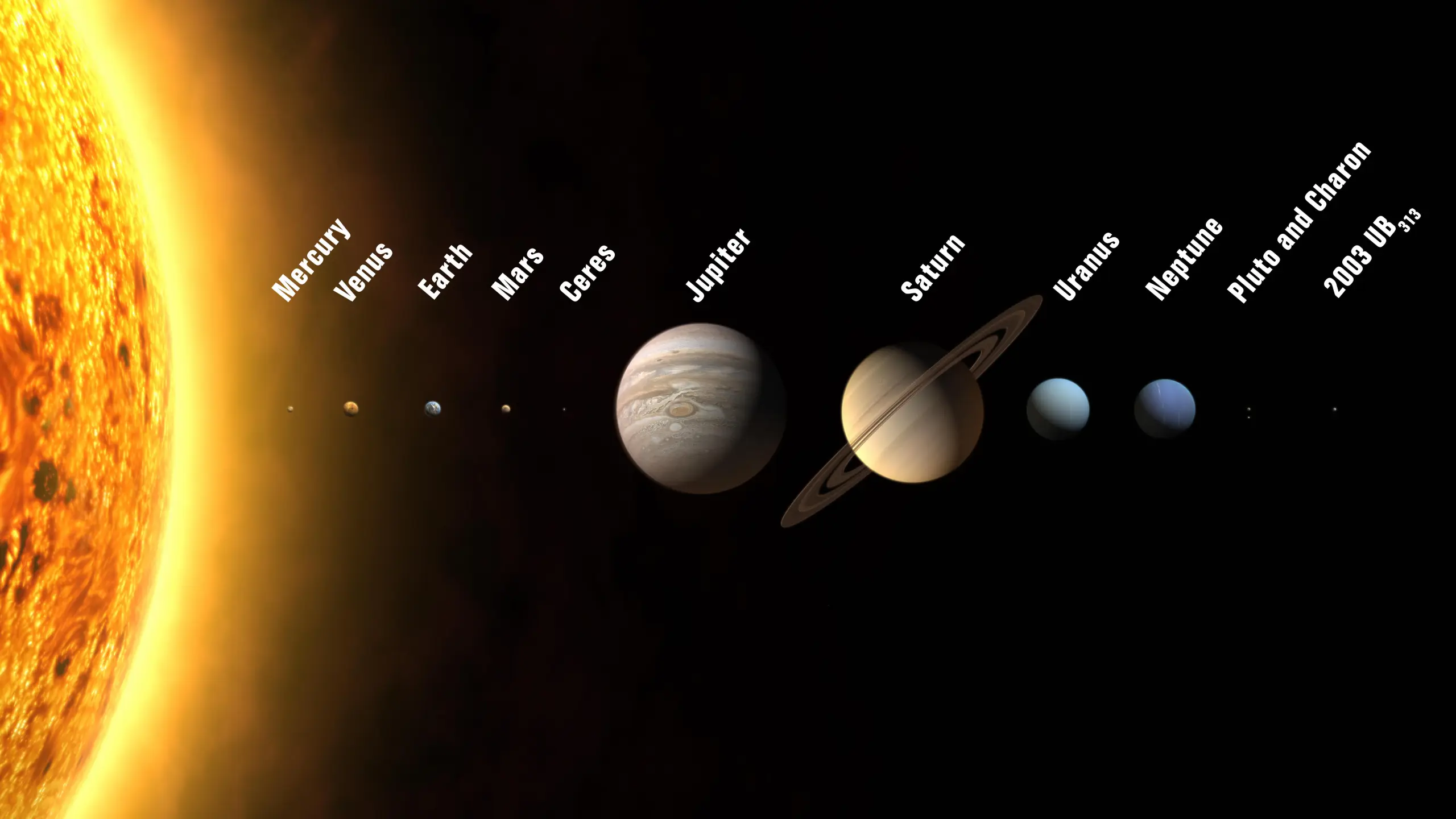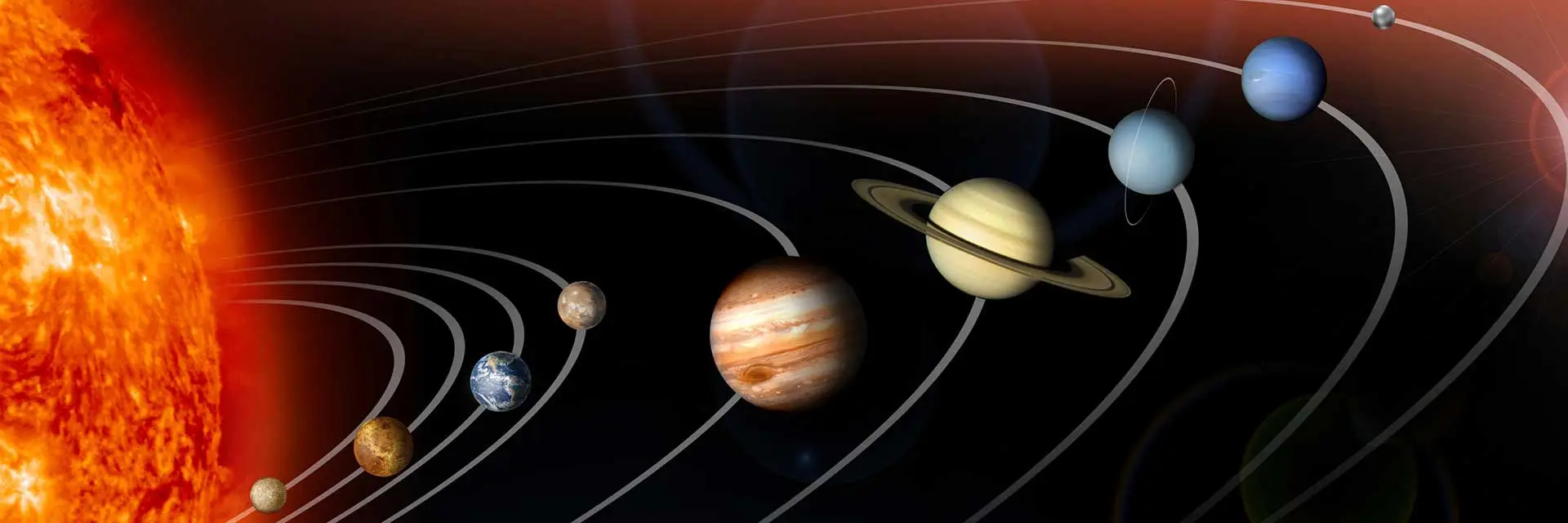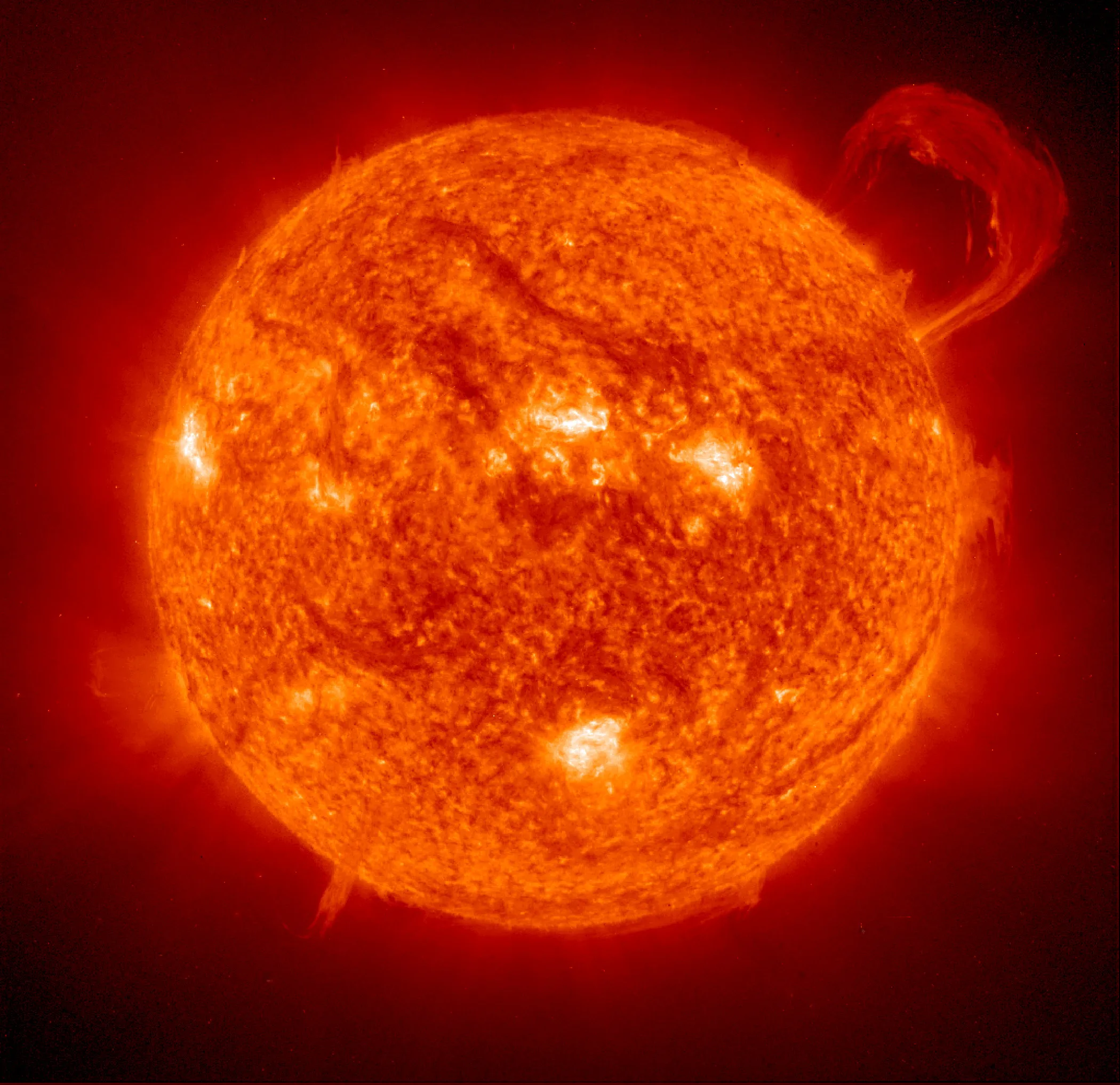
The Solar System consists of the Sun and the celestial objects that are bound to it by its gravity.

The Solar System contains several planets:
For more information, visit NASA's Solar System Exploration.


The Sun is the star at the center of the Solar System. It is a nearly perfect sphere of hot plasma, primarily composed of hydrogen and helium. It provides the energy that sustains life on Earth and is responsible for the Earth's climate and weather.
The Sun has a diameter of about 1.39 million kilometers (864,337 miles) and a mass about 333,000 times that of Earth. It is located approximately 150 million kilometers (93 million miles) away from Earth and takes about 8 minutes and 20 seconds for its light to reach us.
The Sun is a main-sequence star, which means it generates energy through nuclear fusion. Its core temperature reaches about 15 million degrees Celsius (27 million degrees Fahrenheit), where hydrogen atoms combine to form helium, releasing vast amounts of energy in the process.